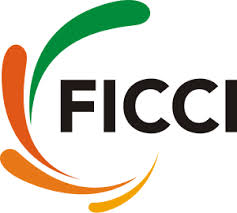 NEW DELHI, June 3, 2014: Dr. Shailesh Nayak, Secretary, Ministry of Earth Sciences, Government of India, today urged industry to design a simple device to provide information about weather changes and impending disasters to people in remote areas such as fishermen who are 50-60 kms away from the sea coast. The information about market should also be included so that fishermen are better placed to sell their catch.
NEW DELHI, June 3, 2014: Dr. Shailesh Nayak, Secretary, Ministry of Earth Sciences, Government of India, today urged industry to design a simple device to provide information about weather changes and impending disasters to people in remote areas such as fishermen who are 50-60 kms away from the sea coast. The information about market should also be included so that fishermen are better placed to sell their catch.
To emphasize the importance of Location Based Services, FICCI in association with the Ministry of Earth Sciences, Government of India, organized Location Based Services (LBS) – 2014 conference on ‘Transforming Coordinates to Business’ here today.
In his keynote address, Dr. Nayak said that the industry should also look at building a link between radio signals and rainfall. He suggested that since bad weather conditions, especially rainfall results in disrupting radio signals, a device or technology should be devised which is able to relay information in adverse weather conditions as well. Speaking about the hindrance faced in receiving real time information about deep-oceanic changes, he said that the industry should look at ways to remove the problem.
Highlighting the initiatives of the government, he said that around 5 million farmers are being provided with information about crops and weather conditions regularly which has helped in increasing productivity. Also, fishermen are using LBS and almost 90% of them do not go out into the sea without checking weather conditions. Besides these, a glider has been launched which is able to detect the approaching cyclones and Tsunami.
He asked the industry to look not just at mobiles as the tool or device for using LBS. Instead Dr. Nayak suggested that new devices must be created which can be linked to satellite to receive or disseminate information.
Mr. Rajesh Mathur, Chair, FICCI Committee on Geospatial Technologies, said that LBS had four basic pillars – device, communication, positioning and GIS system. Elaborating on the GIS system, he said that it helps in articulating the value of Location Analytics Strategy either in a department or across an entire organization. Location Analytics integrates geography with existing business systems and processes. Valuable resources are saved, new visualization and analytic capabilities are added to in-place system providing new perspective on data.
Dr. A Didar Singh, Secretary General, FICCI, said that Location Based Services (LBS) has emerged as the most powerful application of mobile GIS. In business, as in real life situations, location has emerged as a ‘critical enabler’. LBS has multi-sectoral applications. The mobile GIS based applications are becoming important utility services on traffic information, track of the fleet, emergency services etc. FICCI is presently working on the larger vision of mainstreaming applications of geospatial technology as an effective decision making tool for governance in India.
Representing Mr. Sanjiv N. Sahai, Managing Director and CEO, Delhi Integrated Multi – Modal Transit System Ltd (DIMTS), Mr. K Jayakishan highlighted some of the challenges that LBS faces such as user maturity , proprietary solutions, standardization of protocols and paid app downloads in domestic market remains woefully low. Speaking about one of the initiatives of DIMT, he said that the organization conceptualized the scheme of corporatization of private stage carriage buses. Under this scheme 657 bus routes of Delhi were grouped into 17 clusters. Each cluster will be serviced by DTC and a private operator. GPS based Automatic Vehicle Location (AVL) System has been deployed on all the buses and the system was being used to monitor operations of the fleet.
In his closing address, Dr. Vivek Lall, Co- Chair, FICCI Homeland Security Committee, said that the global LBS market is estimated to touch USD 10.3 billion by year 2015, which will consolidate average growth of the sector at a CAGR of 30 per cent from 2010-15. A substantial amount of this growth is expected to come from the Asia Pacific region, especially India and China. LBS has numerous applications in various sectors, be it health, forestry, advertising, asset tracking etc and it surely was the technology which would be widely used by Government and enterprises in future.
